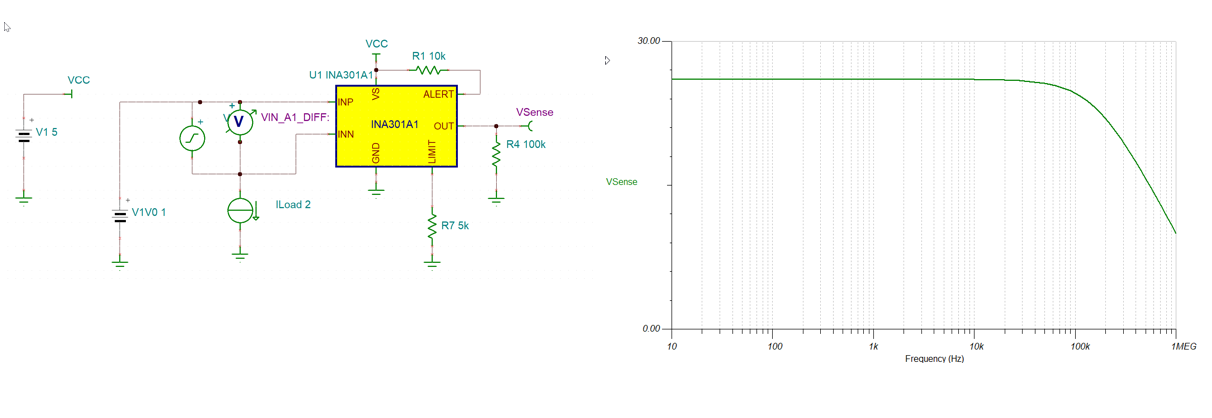Other Parts Discussed in Thread: TINA-TI, INA3221, INA168, INA293, INA290
Hello,
I got another question regarding your INA301.
We've been comparing this device with the configurable INA325. The problem is that we need both configurability and bandwidth but the latter device is less performing in this sense.
We've been simulating your device (INA301) with TINA-TI and, as expected, I noticed that for the High side sensing, with 1mOhm resistance the output is compressed and unresponsive until about 600mA.
I also expect a bandwidth around 500KHz, while I get about 150KHz, can you please explain why I get this result? (INP and INN) are correctly unbalanced with a few mv DC offset within the input source.
Here are my questions:
1. Can you suggest the best option for bandwidth, operational range (minimum working current) and gain configurability?
2. Can you explain the reason why we get such a low bandwidth?
3. By means of discrete opamp it is possible (when less precision is acceptable) to build a custom two stage CS which works down to a few mA of current by adding and removing a given offset to both sages.
considering that we can scarify precision do you believe this is the best option in our case?, Can you propose a working discrete solution?
Best Regards,
GZ




